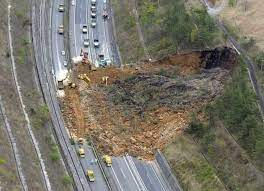Stability analysis of slopes
In this article, we discussed what is stability analysis of slope and various applications in civil engineering in short.
Stability analysis of slopes is a process used to assess the stability and safety of natural and man-made slopes, such as hillsides, embankments, and cut slopes. It involves evaluating the factors that can affect slope stability, predicting potential failures, and implementing measures to prevent or mitigate those failures.

The purpose of stability analysis is to ensure the safety of structures, infrastructure, and human lives in areas where slopes are present.
By understanding the factors influencing slope stability, engineers and geotechnical experts can design effective solutions to enhance stability and reduce the risk of slope failures. This analysis helps in making informed decisions about site selection, design considerations, and construction techniques for various civil engineering projects.
Applications of stability analysis of slopes include
- Geotechnical Engineering
- Highway and Railway Engineering
- Mining and Quarrying
- Environmental Managements.
- Disaster Risk Assessment
In summary, stability analysis of slopes is a critical process in geotechnical engineering and other related fields. It ensures the safety of structures, helps in designing appropriate measures to enhance slope stability, and plays a vital role in disaster risk management and environmental protection.

